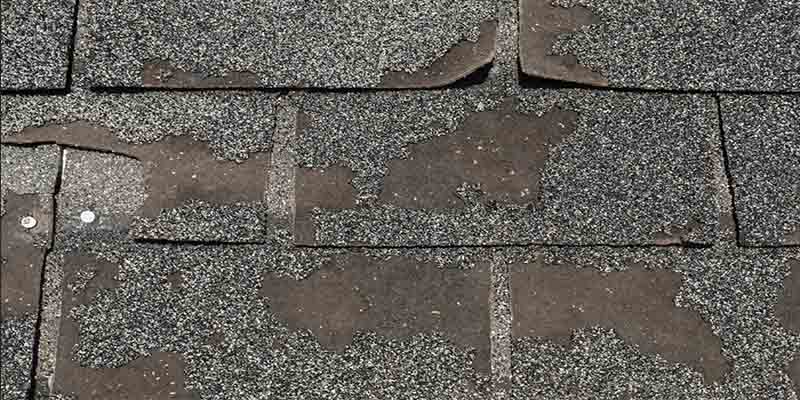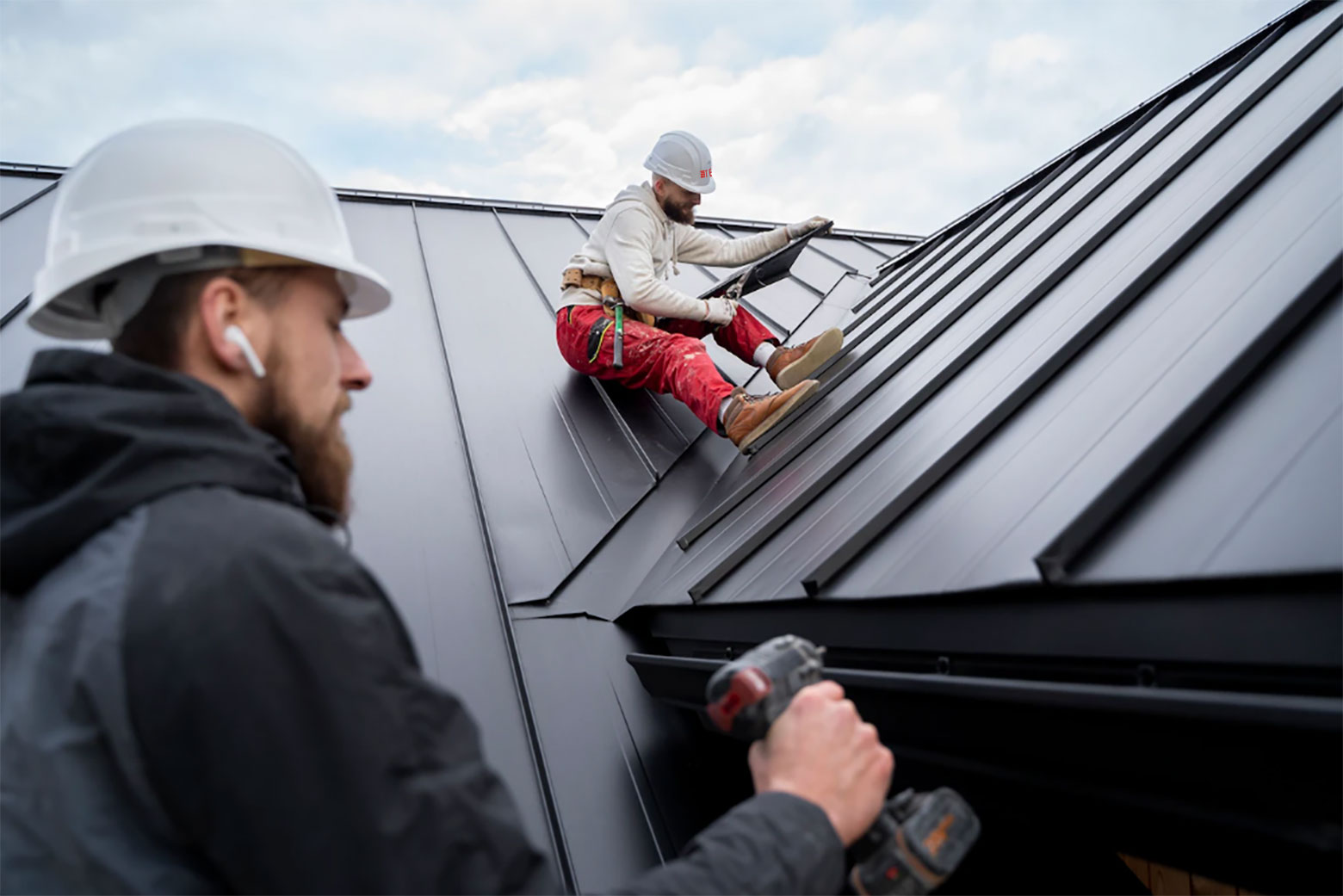Comprehending the Various Kinds of Roofing Systems: A Comprehensive Overview for Homeowners
With a variety of alternatives-- ranging from the conventional gable to the modern level-- each type presents special benefits and challenges that must straighten with the property owner's environmental factors to consider and certain demands. As we check out the ins and outs of different roof types, it comes to be evident that one size does not fit all; the ideal selection might shock you.
Gable Roofings
Gable roofs, identified by their triangular form, are among the most prominent roof styles due to their simplicity and efficiency in losing water and snow. This layout includes two sloping sides that fulfill at a ridge, enabling reliable drainage and lessening the threat of water accumulation. The high pitch typically associated with gable roofings enhances their capability to deal with hefty rainfall, making them appropriate for various climates.
In addition to their functional advantages, gable roofs supply aesthetic adaptability. They can be adjusted to different architectural designs, from traditional to contemporary homes. The design can additionally accommodate extra features such as dormer home windows, which improve natural light and air flow in the attic area.
In addition, gable roofings supply enough space for insulation, adding to energy performance. House owners can pick from a variety of roofing products, including asphalt tiles, metal, and ceramic tiles, additionally improving customization options.
In spite of their benefits, saddleback roofs might need additional support in locations prone to high winds or heavy snowfall. On the whole, the saddleback roof continues to be a popular selection due to its mix of functionality, resilience, and aesthetic allure.
Apartment Roofs
Level roofs are commonly acknowledged for their minimalist layout and sensible applications, especially in commercial and industrial setups (oahu roofing). These roof coverings include a straight or almost straight surface area, which permits simple building and functional area use. While they might do not have the visual charm of angled roofs, flat roofs offer various benefits, particularly in metropolitan atmospheres where maximizing space is essential
One of the key benefits of level roofing systems is their ease of access. House owners can make use of the roofing system space for numerous functions, such as roof yards, balconies, or photovoltaic panel setups. In addition, flat roof coverings are typically a lot more economical to keep and set up compared to their sloped equivalents, as they need fewer materials and labor.
Usual materials made use of for level roofings include built-up roof covering (BUR), customized bitumen, and single-ply membrane layers, each offering unique benefits. In general, level roof coverings offer as a useful and adaptable choice for several house owners and services alike.
Hip Roof Coverings
Hip roofing systems are defined by their sloped sides that assemble at the top, forming a ridge. This style stands out from saddleback roofs, as all four sides of a hip roof covering incline downwards toward the wall surfaces, offering a more stable structure. The angle of the slopes can vary, enabling for versatility in building aesthetic appeals and capability.
One of the primary benefits of hip roofing systems is their capability to hold up against heavy winds and negative weather. The sloped surface areas allow much better water drainage, lowering the threat of leakages and water damage. Furthermore, hip roofings provide hop over to these guys raised attic room room, which can be used for storage or perhaps converted into livable areas.
Nevertheless, constructing a hip roof can be a lot more expensive and complicated than simpler roofing system types, such as gable roofing systems. The additional product and labor involved in producing the slopes and ensuring correct architectural stability can result in higher expenses. Regardless of these drawbacks, lots of house owners favor hip roofings for their sturdiness, visual charm, and potential for power performance.
Mansard Roofings
Mansard roof coverings, typically identified by their one-of-a-kind four-sided style, function 2 slopes on each side, with the lower incline being steeper than the top. This building style, originating from France in the 17th century, is not only cosmetically enticing yet useful, as it optimizes the functional area in the top floors of a building. The steep lower slope allows for more clearance, making it a perfect option for loft spaces or attics, which can be exchanged living spaces.
Mansard roofs are identified by their convenience, accommodating different architectural styles, from typical to modern. They can be built with different products, consisting of asphalt roof shingles, slate, or steel, providing home owners with an array of choices to suit their budgets and choices. Additionally, the style enables for the assimilation of dormer windows, boosting natural light and air flow in the upper levels.
Nevertheless, it is important to take into Click This Link consideration the potential disadvantages. Mansard roofings might need more maintenance as a result of the intricacy of their layout, and their high slopes can be challenging for snow and rainfall overflow. Generally, mansard roofings incorporate style with practicality, making them a preferred choice among home owners looking for unique architectural features.
Lost Roofings
As homeowners progressively seek simplicity and capability in their building styles, shed roofings have arised as a preferred choice. Defined by a solitary sloping plane, a shed roof provides a minimal aesthetic that matches various home designs, from contemporary to rustic.
One of the key advantages of a shed roof is its uncomplicated building, which commonly equates to reduce labor and material costs. This design enables reliable water drainage, minimizing the risk of leakages and water damage. Additionally, the upright slope provides sufficient space for skylights, improving natural light within the interior.
Shed roofs likewise offer flexibility in terms of usage. They can be successfully incorporated right into enhancements, garages, or outside structures like structures and sheds. Moreover, this roof design can fit different roofing materials, including metal, asphalt shingles, and even environment-friendly roofing systems, aligning with green campaigns.
Nonetheless, it is necessary to think about regional environment conditions, as heavy snow lots may necessitate adjustments to the roof's angle or framework. Overall, lost roofings present a practical and visually pleasing choice for property owners wanting to optimize performance without jeopardizing style.
Verdict


Gable roof coverings, defined by their triangular shape, are amongst the most popular roofing designs due to their simplicity and performance in shedding water and snow. oahu roofing. The steep pitch commonly connected with gable roof coverings improves their capacity to manage hefty rainfall, making them ideal for various environments
While they may lack the visual appeal of pitched roofs, flat roofs supply numerous benefits, particularly in YOURURL.com metropolitan settings where making the most of room is critical.
